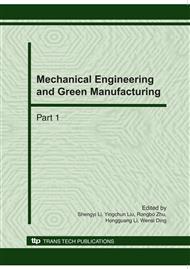p.1822
p.1829
p.1834
p.1840
p.1845
p.1850
p.1855
p.1859
p.1865
Study on the Mechanical Performance of Glass Fiber 2D Woven Fabric Laminated Composites with Different Splicing Shape and Interval Length
Abstract:
In order to investigate the effect of splicing shape and splicing interval length of reinforced fabric on the mechanical performance for manufacturing composite parts in complicated shape with laminated 2D glass fiber woven fabric. On the basis of [0º/45º/90º/90º/0º] S ply sequence, six kinds of laminated performs with different splicing interval lengths which were 4mm, 8mm, 12mm respectively and two different splicing shape which were ladder splicing (LS) and double vertical line splicing (DLS), and a kind of laminated perform with continuous laminates (CL) of 2D glass fiber woven fabric were made. By means of RTM molding technology, the technological parameters of RTM processing were designed as follows: injection temperature was 25°C, injection duration time was 180min and injection pressure was 0.4MPa, the epoxy resin based 2D glass fiber woven fabric RTM laminated specimen were prepared. According to the GB/T 1447-2005 and GB/T 1449-2005standard test method, the tensile and flexural properties of the 2D glass fiber woven fabric laminated RTM specimen were tested. It was found that the tensile fracture position were all near the splicing line, the main reason of which was the concentration of tensile stress. The tensile and flexural test results show that the difference of the splicing shape and the splicing interval length will generate a significant effect on the mechanical performance of the laminate. All above experimental results could provide fundamental data to the optimal design complex structure laminated composite parts.
Info:
Periodical:
Pages:
1845-1849
Citation:
Online since:
October 2010
Authors:
Price:
Сopyright:
© 2010 Trans Tech Publications Ltd. All Rights Reserved
Share:
Citation:


